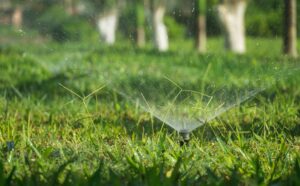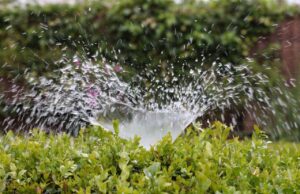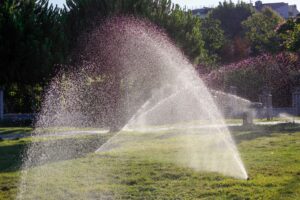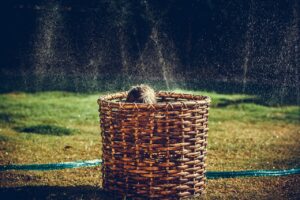Residential Sprinkler Head Types: A Comprehensive Guide
 |
 |
 |
 |
Table of Contents
- Common Residential Sprinkler Head Types
- Choosing Compatible Sprinkler Heads
- Comparing Top Sprinkler Brands
- Sprinkler System Design Tips
- Sprinkler Installation Tips
- Routine Sprinkler Maintenance
- Choosing Heads for Specific Climate Considerations
- Conclusion
Beautiful, lush lawns require proper, efficient irrigation. The key to effective watering is choosing and installing the best sprinkler heads for your unique lawn size, shape, and environment. With many types of heads available from various brands, it can get confusing selecting the right models. This comprehensive guide will walk through the most popular residential sprinkler head types, comparing their features, ideal uses, top brands, installation methods, maintenance needs, and how to choose compatible combinations to achieve excellent coverage. Whether you’re installing a new system or upgrading existing sprinklers, this detailed overview will provide in-depth knowledge to pick and maintain the perfect heads for your yard.
| Sprinkler Type | Recommended Use | Known For | Maintenance Required |
|---|---|---|---|
| Fixed Spray Heads | Small to medium lawns, tight spots, gardens | Uniform coverage, affordable, adjustable arc/radius, variety of spray patterns | Flush debris, replace nozzles, adjust arc/radius seasonally, drain in winter |
| Rotary Sprinkler Heads | Medium to large lawns, uneven terrain | Even water distribution, large coverage area, customizable settings | Inspect and clear debris, lubricate gear drive, check radius adjustment, replace nozzles every 2-3 years |
| Pop-Up Spray Heads | Any lawn size, tight spaces, visually appealing areas | Defined spray coverage, concealed underground, adjustable nozzles | Flush dirt and debris, replace worn springs and seals, drain manually in winter |
| Impact or Rotor Heads | Very large lawns, parks, athletic fields | Uniform coverage, simple operation, resistant to wind drift | Flush nozzle opening, inspect swing arm motion, replace worn swing arm and spring |
| Drip Irrigation Heads | Gardens, trees, shrubs, planter boxes | Efficient targeted hydration, water savings, leak-resistant tubing | Flush lines annually, inspect for damage, clean filter regularly |
Common Residential Sprinkler Head Types
Fixed Spray Heads
Fixed spray heads, or stationary spray heads, emit water in a set fan pattern from a stationary base. The nozzles come in different spray configurations like full circle, half circle, quarter circle and rectangular. Spray heads work well for small to medium areas of lawn up to 20 feet wide such as yards with hard-to-reach spots, defined edges and borders. They can be installed in ground with a pop-up stem or above ground mounted on a vertical spike base.
Pros:
– Provide very uniform, consistent coverage in defined spray patterns.
– Affordable, usually $5-$20 per head.
– Simple to adjust arc, radius and nozzles.
– Low pressure requirement of 10-15 PSI. Great for low pressure situations.
– Variety of available spray patterns to match lawn shapes.
– Easy to service and replace parts.
– Durable construction, lasting 5-10 years generally.
Cons:
– Limited spray distance of 10-15 feet. Not ideal for very large open areas.
– Prone to wind distortion on spray pattern.
– Above-ground models can be less visually appealing.
– More heads required for larger lawns to get full coverage.
Ideal Use Cases:
– Small to medium rectangular or oddly shaped lawns.
– Tight spots, irregular edges and borders.
– Flower beds and gardens needing defined coverage.
– Areas with specific water needs, like gardens within a lawn.
– Very windy areas where rotary heads would distort.
Top Brands: Rain Bird, Orbit, Hunter
Spray Specs:
– Distance: 10-15 feet standard models, up to 30 feet for some long-range versions.
– Arc: Adjustable from 25 to 360 degrees.
– Precipitation Rate: 1-2 inches per hour.
– Runtime: 10-15 minutes per zone to avoid runoff.
Maintenance Tips:
– Flush debris from nozzle filter spring and screen periodically.
– Replace nozzle if spray pattern becomes uneven.
– Adjust arc and radius down seasonally to reduce overspray.
– Drain heads manually in winter if below frost line.
Ideal For:
Small to medium lawns under 20 feet wide. Tight spots and irregular lawn shapes. Defined garden and flower bed areas. Very windy environments.
Fixed Spray Head Spray Pattern
Fixed spray heads, also known as stationary spray heads, emit a steady and unchanging pattern of water. These are ideal for smaller areas such as flower beds or tight corners of the lawn. They offer precision and consistency, ensuring that water is distributed evenly over the designated area.
Rotary Sprinkler Heads
Rotary sprinkler heads, also called gear-drive sprinklers, have a rotating arm that sprays water in a circular pattern to cover larger areas. The rotating mechanism can be gear driven or impact driven. Rotary heads are ideal for watering medium to large open lawns up to 50 feet wide. Adjustable arc nozzles and radius control allow customizing the watering coverage area precisely. Reliable performance and uniform watering make rotary sprinklers well suited for expansive yards and areas with varying elevations.
Pros:
– Even water distribution and high uniformity.
– Large coverage area from 30 to over 50 feet.
– Customizable arc and radius settings.
– Reliable operation for 5-10 years when maintained.
– Uniform coverage across sloped and uneven terrain.
Cons:
– Higher cost than spray heads, ranging from $30-$100 per head.
– Require moderate water pressure of 30-50 PSI.
– Prone to damage if hit by lawn mowers or animals.
Ideal Use Cases:
– Medium to large open grass lawns.
– Yards with elevation changes and uneven terrain.
– Palatial-sized properties requiring broad coverage.
– Park or sports field irrigation.
Top Brands: Rain Bird, Hunter, Toro, Nelson
Spray Specs:
– Distance: 30 to over 50 feet depending on model.
– Arc: Adjustable from 40 to 360 degrees.
– Precipitation rate: 1-2 inches per hour.
– Runtime: 15-20 minutes per zone.
Maintenance Tips:
– Inspect and clear debris from nozzle opening regularly.
– Lubricate gear drive with waterproof grease.
– Check radius adjustment screw for proper throw distance.
– Replace nozzles every 2-3 years to maintain optimal pressure.
Ideal For:
Medium to large open rectangular lawns over 30 feet wide. Sloped or uneven terrain. Areas needing broad uniform coverage.
Rotary Sprinkler Heads Spray Pattern
Rotary sprinkler heads, or rotor heads, are characterized by their rotating streams of water. They cover larger areas and are suitable for medium to large lawns. The rotating mechanism allows for a more extensive reach, making them efficient for general lawn irrigation. They often have adjustable features to control the distance and angle of the spray.
Pop-Up Spray Heads
Pop-up spray heads combine the precision spray patterns of standard spray heads with the added benefit of retracting below ground when inactive. Pop-up heads provide the adjustable coverage of spray heads with the aesthetic appeal of concealed sprinklers. They are suitable for any lawn size needing defined watering across zones such as borders and tight spaces. Adjustable nozzles allow customizing the spray distance and arc for the specific garden shape. The spring-loaded pop-up mechanism protects the sprinkler while not in use.
Pros:
– Provide defined spray coverage with flexibility to accommodate any shape.
– Concealed underground for better aesthetics.
– Adjustable nozzles allow tweaking spray distance and width.
– Durable construction and long service life.
Cons:
– More expensive than standard spray heads, $25-$100 per unit.
– Requiring a bit more maintenance due to grit exposure when retracted.
Ideal Use Cases:
– Visually appealing lawns where appearance is important.
– Borders, edges, tight spots needing defined coverage.
– Irregular or complex landscapes.
– Flower beds and gardens with specifically shaped areas.
Top Brands: Rain Bird, Hunter, Toro, Orbit
Spray Specs:
– Distance: 10-15 feet for most models, up to 30 feet for extended range versions.
– Arc: Adjustable from 25 to 360 degrees.
– Precipitation Rate: 1-2 inches per hour.
– Runtime: 10-15 minutes per zone.
Maintenance Tips:
– Periodically flush dirt and debris from pop-up housing after retraction.
– Replace worn springs and seals allowing smooth pop-up action.
– Drain heads manually in winter if below frost line.
Ideal For:
Any lawn size needing defined coverage areas. Visually appealing landscapes where appearance matters. Tight spots requiring precision watering.
Pop-up Spray Heads Spray Pattern
Pop-up spray heads are designed to retract into the ground when not in use, providing a cleaner and less obtrusive appearance. When activated, these heads pop up and emit a fixed spray pattern. They are commonly used in residential lawns and gardens, offering versatility in terms of spray distance and arc adjustment.
Impact or Rotor Sprinkler Heads
Impact sprinkler heads, also called rotor heads, deliver water through rapidly spinning action spraying outward in a circular pattern. Impact heads can cover very large areas up to 70 feet, making them well suited for oversized lawns, parks and athletic fields. Simple mechanical operation and uniform coverage let impact rotors reliably water irregular or extremely large areas. The spinning arm action breaks up the water into large droplets that resist wind drift.
Pros:
– Provide very uniform coverage across a circular area up to 70 feet diameter.
– Simple, reliable mechanical operation with minimal parts to fail.
– Large droplet spray pattern resistant to wind drift.
– Long service life, up to 10-15 years.
Cons:
– Nozzle can clog more easily from grit ingestion.
– Possible warranty void if hit by mower or animals.
– Not recommended for smaller residential spaces.
Ideal Use Cases:
– Extraordinarily large residential lawns.
– Public parks, sports fields, golf courses with vast expanses of grass.
– Agricultural irrigation across open terrain.
Top Brands: Nelson, Rain Bird, Orbit, K-Rain
Spray Specs:
– Distance: Up to 70 feet diameter coverage area.
– Precipitation Rate: 1-2 inches per hour.
– Runtime: 15-20 minutes per zone.
Maintenance Tips:
– Flush nozzle opening and swirling chamber regularly.
– Inspect mechanism for proper swing arm motion.
– Replace worn swing arm and spring as required.
Ideal For:
Oversized residential lawns over 1 acre in size. Irregularly shaped large yards. Parks, golf courses, and athletic fields requiring broad uniform coverage.
Impact or Rotor Sprinkler Heads Spray Pattern
Impact or rotor sprinkler heads are known for their distinctive ticking sound as they rotate. These heads produce a multi-stream, pulsating spray pattern, making them suitable for large areas like athletic fields or expansive lawns. Their robust design and ability to handle varying water pressures contribute to their durability and effectiveness in challenging environments.
Drip Irrigation Heads
Drip irrigation heads slowly emit water to soil and plant roots using emitters and low-flow tubing. With no aerial watering, drip heads provide targeted hydration precisely where needed, ideal for gardens, trees, shrubs and planters. Watering directly at the root zone with minimal runoff or evaporation makes drip irrigation extremely efficient.
Pros:
– Very efficient, targeted hydration of root zones.
– Dramatic water savings from low volume delivery.
– Leak resistant tubing lasts for years.
– Components install at or below ground level.
Cons:
– Filtration required to reduce emitter clogging over time.
– Rodents may chew through tubing if not buried.
– Primarily supplements other heads, not for full lawn coverage.
Ideal Use Cases:
– Vegetable and flower gardens.
– Trees, shrubs, bushes.
– Planter boxes and potted plants.
– Mulched beds and rocky areas with buried tubing.
Top Brands: Rain Bird, Orbit, Melnor
Flow Rate:
– Emitters release 0-30 gallons per hour depending on type.
– Drip line tubing up to 2 gallons per hour per foot.
Maintenance Tips:
– Flush lines with high pressure annually.
– Inspect for damaged tubing or emitters.
– Clean filter regularly, check for obstructions.
Ideal For:
Focused watering of gardens, trees, shrubs with targeted hydration to root zones.
Choosing Compatible Sprinkler Heads
The key to great coverage with efficiency is to choose complementary sprinkler heads for each zone of your yard based on layout and features.
Small square yards – Spray heads for all zones.
Medium rectangle yards – Rotary heads for middle, spray heads along edges.
Large multiple shape yards – Rotary for open areas, pop-up spray heads for irregular sections.
Lots of planting beds – Drip irrigation for beds, pop-up spray heads for lawn.
Sloped Terrain – Rotary heads on inclines, spray heads for flat bottom sections.
High winds – Impact rotors for main space, avoid standard spray heads.
Shady zones – Multi-stream rotary heads to reach all areas.
Elevation changes – Adjustable arc nozzles for even top to bottom watering.
Knowing the strengths of each head type allows combining them strategically based on your unique lawn size and attributes for the best results.
Comparing Top Sprinkler Brands
In addition to selecting suitable head types, choosing quality components from reputable brands is key for longevity and performance. Here is an overview of some top sprinkler manufacturers:
Rain Bird – The most recognized name in irrigation, Rain Bird offers industry-leading rotary, spray, and drip heads for residential use. Known for rugged durability and precision watering across all products.
Hunter – A leader in water-efficient irrigation, Hunter offers a wide selection of high-performing rotary and spray heads featuring adjustable nozzles, radius control, and durable construction to withstand residential use.
Toro – A familiar brand in outdoor power equipment, Toro makes reliable fan and multi-stream rotary sprinklers along with pop-up spray heads perfect for residential installations of all sizes.
Orbit – Providing affordable solutions for home irrigation, Orbit offers extensive lines of both gear and impact drive rotary models along with popular piston spray heads and micro-spray systems.
Melnor – Known for cost-effective sprinklers and watering accessories, Melnor produces multi-pattern oscillating models combined with drip irrigation components suitable for residential use.
K-Rain – Specializes in small to mid-size commercial-grade spray head sprinklers built for uniform coverage, flexibility and durability across home installations.
Nelson – The leader in large area impact rotor sprinklers, Nelson’s simple yet robust designs excel at covering massive expanses of grass with uniform watering.
When selecting heads, look for durable construction, precision nozzles, and thoughtful features tailoring to home use. Also ensure replacement parts are readily available for maintenance. Choosing quality components from leading brands will maximize the lifespan and performance of your system.
Sprinkler System Design Tips
Careful planning and design is crucial before installing sprinkler heads and piping. Following professional design principles will ensure your system provides complete, efficient coverage.
Create a base property map – Draw up a map with dimensions of all lawn sections, planting beds, slopes, and obstructions to design irrigation zones.
Conduct a site inspection – Note details like sunny vs shaded areas, soil types in each section, and high use zones for sports or pets.
Calculate water supply – Confirm sufficient pressure and flow by conducting GPM and PSI tests at the water source using gauges.
|
Click here for step-by-step instructions on calculating GPM and PSI |
Determine precipitation rate – The ideal amount of water applied per hour without runoff, measured in inches per hour. This depends on soil type and sun exposure.
Divide into watering zones – Group heads with similar needs into zones based on plant type, sun exposure, and terrain.
Select proper heads – Choose suitable types based on reach, arc, and flow rate for optimal coverage in each zone.
Map head placements – Draw head locations based on recommended spacing for spray diameter overlap, adjusting for terrain and obstructions.
Install automatic timer – Connecting zones to a programmable timer allows custom scheduling tailored to each zone’s needs.
Following these design steps will ensure your components and layout match your property’s unique specifications, resulting in an efficient system.
Sprinkler Installation Tips
Proper installation of sprinkler heads and piping prevents many downstream issues. Here are best practices to follow:
Pre-installation:
– Call 811 to mark utilities before any digging to avoid line strikes.
– Read all manufacturer instructions before starting.
– Gather all required tools and materials needed for install.
– Brief excavation crew on system layout if hiring.
Heads:
– Ensure heads are compatible with supply piping size and fittings.
– Position heads according to plan spacing for optimal coverage.
– Keep head height minimum 4 inches above ground for clearance.
– Confirm heads pop-up and retract smoothly and properly.
Piping:
– Lay supply grid piping from water source through zones with required branch lines.
– Maintain minimum 12 inch depth for supply lines, 18 inches for colder climates.
– Slope pipes >10 feet minimally to drain moisture.
– Confirm pipe size matches system design specs.
Testing:
– Pressurize system and perform leak checks before backfilling trenches.
– Adjust heads for proper spray area and even distribution.
– Run zones to confirm timer controls each section separately.
Taking the time to methodically install components correctly will save much grief down the road.
Routine Sprinkler Maintenance
Consistent maintenance keeps sprinklers working optimally for years. Follow these upkeep best practices:
Nozzles – Clean and inspect nozzles for debris annually. Replace immediately if damaged.
Filters – Clean filter screens regularly, at least yearly. Replace filters every 2-3 years.
Timers – Adjust watering schedules and durations seasonally based on weather and plant needs.
Leaks – Monitor zones regularly for leaks. Repair damaged heads or pipes promptly.
Drainage – Before winter, drain system from low point if below frost line. Consider professional winterization.
Pressure – Check pressure at supply source yearly to ensure consistency. Use a pressure regulator as needed.
Misc – Keep heads clear of growing vegetation. Adjust heads or nozzles if misaligned.
Setting reminders to perform routine maintenance ensures your system operates at peak efficiency season after season.
Choosing Heads for Specific Climate Considerations
Local climate plays a key role in selecting suitable heads. Here are tips for different weather environments:
Hot and Dry:
– Use heads with larger droplets to minimize evaporation loss.
– Water more frequently for shorter durations to reduce runoff.
– Place heads closer together for optimal coverage uniformity.
Cool and Wet:
– Allow for increased absorption time between watering cycles.
– Monitor for adequate dry-out time to avoid fungal diseases.
– Reduce watering durations in high rainfall months.
Windy Areas:
– Select heads with specialized wind resistant nozzles and consistent spray pattern.
– Use rotor heads instead of spray heads where possible.
– Group heads closer together to create wind buffering.
Freezing Winter:
– Utilize in-ground heads and drain piping below frost line.
– Remove and store above-ground components.
– Hire professional to blow-out lines before winter.
Picking heads well suited for local conditions leads to healthy grass and gardens with no wasted water.
Equipped with the right knowledge of sprinkler options, you can create a superb irrigation system for any lawn size and climate. Understanding the strengths of each head style allows combining complementary models tuned for your unique yard. Well-designed installations performed methodically prevent many issues down the road. Routine maintenance keeps systems working flawlessly for years on end. A perfectly watered landscape brings joy for the entire household to enjoy while conserving this precious resource.
Conclusion
Understanding the different types of residential sprinkler heads is crucial for ensuring the health and beauty of your lawn. With various options available, each catering to specific watering needs and landscapes, choosing the right one can make a significant difference. If you’re looking to create an efficient and effective irrigation system tailored to your unique outdoor space, why not consult a professional? We encourage you to find a lawn care specialist near you. They can offer expert advice, help you navigate the plethora of options, and ensure your sprinkler system is set up perfectly for your lawn’s requirements. Don’t miss out on this opportunity to elevate your landscape to its full potential. Contact us today for a quote and take the first step towards a lush, vibrant lawn that’s the envy of the neighborhood!
As an Amazon Associate, we earn from qualifying purchases. Affiliate links help support our work and allow us to continue providing free content. If you make a purchase through an affiliate link, we receive a small percentage of the sale at no extra cost to you.
The DIY repair advice on this site is for informational purposes only. The content aims to be helpful but cannot guarantee success or substitute professional advice. Any repairs involve some risk, so readers assume all liability and responsibility for their actions. Safety should be the top priority. If unsure about any procedure, first consult a qualified professional to determine suitability.
- Sprinkler Rebate Guide
- Slash Your Water Bill and Save the Planet with Sprinkler Rain Sensors!
- How to Revive a Lawn: Bringing Your Drought-Stricken Lawn Back to Life
- Sprinkler Repair Costs: The Shocking Truths You Need to Know!
- Gardeners Won’t Believe These Raised Bed Irrigation System Hacks!
- 11 Shocking Secrets to Buying the Perfect Sprinkler Heads
- A Comprehensive Guide on How to Adjust the Rainbird 5000 Sprinkler Head
- The Complete Step-by-Step Guide to Design a Sprinkler System
- Residential Sprinkler Head Types: A Comprehensive Guide
- Thank You For Subscribing





